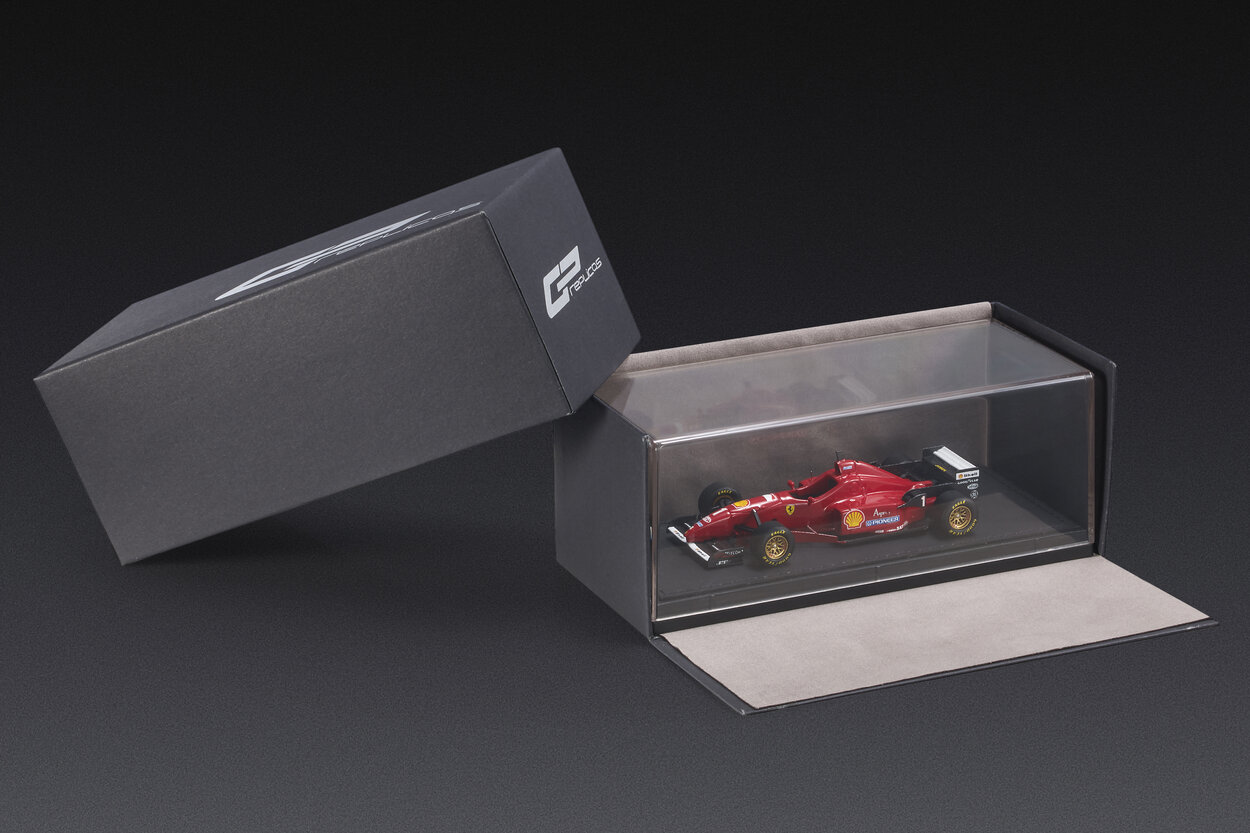Ferrari F310
It’s the car of Ferrari’s restart, and it is so for multiple reasons.
Firstly, Ferrari decides to abandon the 12-cylinder engine with which it has written many significant pages of its history in favor of a brand new 10-cylinder engine. The choice is partly dictated by regulations that mandate, from the previous year, engines with a displacement not exceeding three liters, and partly by reasons of lower consumption, weight, and size. In classic Ferrari style, the designation of the car summarizes the characteristics of the engine: 3 liters of displacement, 10 cylinders.
Moreover, the new engine is just a reflection of a much broader revolution that has engulfed Maranello after the appointment of Luca di Montezemolo at the helm in the fall of 1991, followed by the arrival of highly valued technicians like Ross Brawn, and the return of others like Gustav Brunner and especially John Barnard. Responsible for the design and development of the engines is Paolo Martinelli from Modena.

Drivers:
Michael Schumacher: Among the many novelties of the 1996 season, there are also the drivers, with an unprecedented pair. Michael Schumacher arrives on the back of winning two consecutive world titles in the previous seasons and does not disappoint. Behind the wheel of the 310, he is already on the top step of the podium in the seventh race of the season, the Spanish Grand Prix in Barcelona. But before that, he has already finished twice on the second step of the podium at the Nürburgring (European Grand Prix) and Imola. Before the end of the year, he wins again at Spa and Monza. The summary of his first season at Ferrari is three victories, five podiums, four pole positions, and two fastest laps in the race.
Eddie Irvine: The Irish driver starts well with a third-place finish in the first race of the year in Melbourne. Then, he encounters a long series of retirements, interspersed with three points finishes and two more in the top ten. But he proves to be a team player from the start, and his understanding with teammate Schumacher is perfect.
Our model cars:

The 310 from 1996 incorporates some solutions already experimented with, albeit with little success, on the F92A, such as the sidepods detached from the rest of the car. The rest are very strict interpretations of the new regulations, which, for safety reasons, have, for example, created very bulky surfaces on the sides of the cockpit to protect the driver’s head.
At the beginning of the season, the 310 is the only Formula 1 car with a low nose. However, starting from the Canadian Grand Prix in June, Ferrari also aligns with the competition and introduces a new raised nose.



